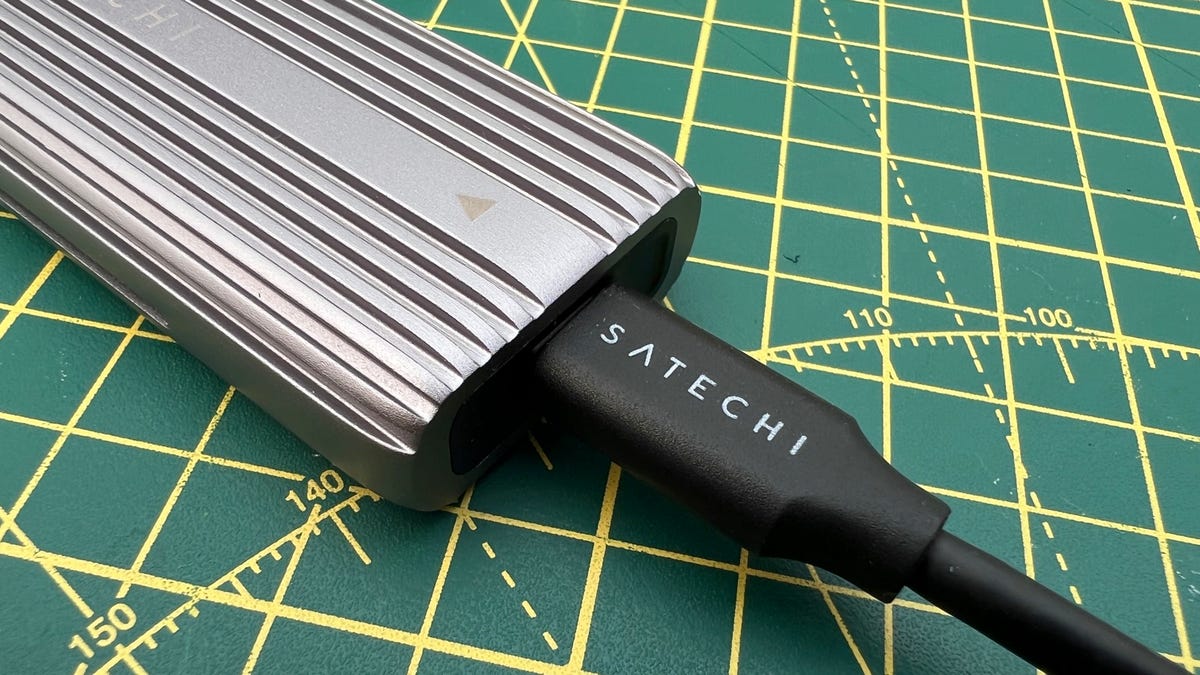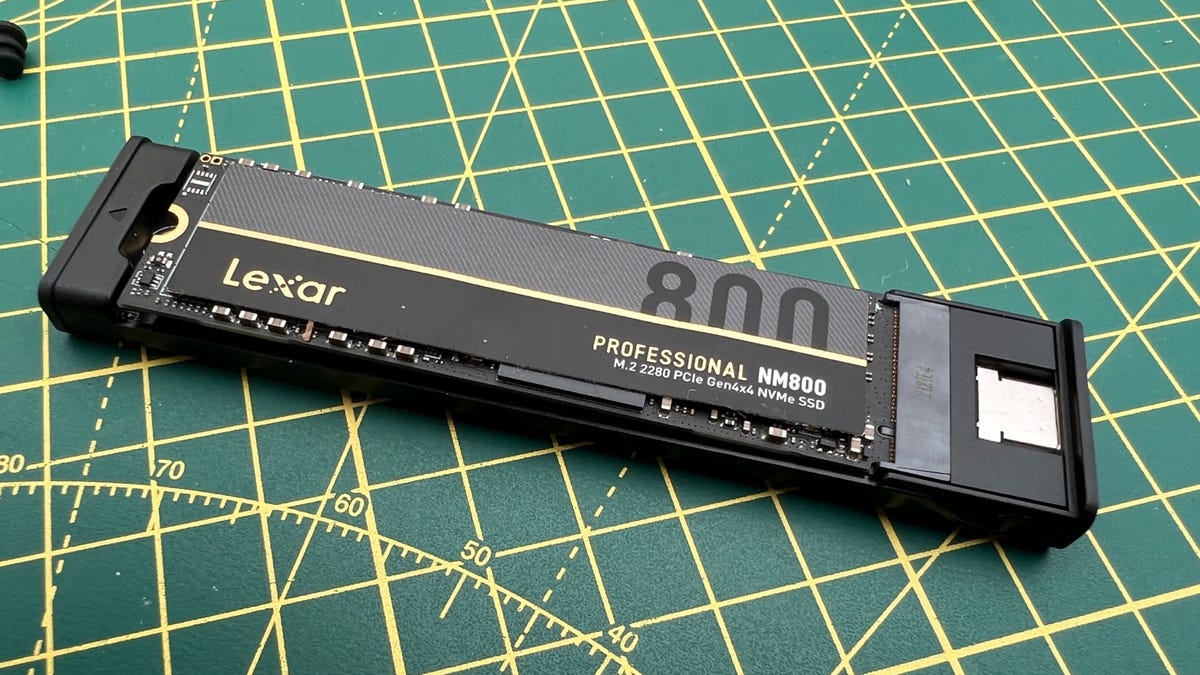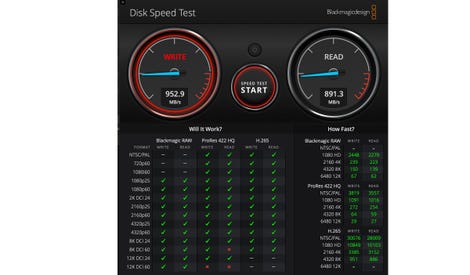I’m a big fan of Satechi hardware. This company makes all kinds of docking stations, peripherals, and storage devices that look like Apple hardware.
The latest addition to the Satechi range is a USB-C, NVME and SATA SSD enclosure.
The idea is simple. You buy the enclosure, add a PCIe or NMVe M.2 drive, and away you go. There’s even a USB-C connector and cable included.

Satechi USB-C Enclosure with SSD Slot – Best Prices:
 Amazon Marketplace
Amazon Marketplace49.99
No screwdrivers or tools are required for assembly.
Design and use
The case is made of a resistant and rather elegant aluminum. There is a USB-C port on one of the edges while the other houses a lever that allows you to extract the disk or install a new one.

Image: Adrian Kingsley-Hughes.
Installing a drive is easy. Just grab the SSD you want to use (we’ll come back to this), remove the protection from the thermal pad and attach it to the dock provided. Once plugged in, the drive is held in place with a rubber mount.

Image: Adrian Kingsley-Hughes.
Then simply put the dock back in its case.

Image: Adrian Kingsley-Hughes.
That’s all. No tools needed.
Performance and compatibility
The Satechi SSD enclosure can accommodate PCIe and NMVe M.2 drives in 2242/2260/2280 (without heatsink).
Here are some SSDs I recommend:
Overall performance is pretty good. You can see in the image below that my drive achieved read and write speeds of 890MB/s and 950MB/s (I’m using the Lexar Professional NM800).

Image: Adrian Kingsley-Hughes.
Some SSD enclosures heat up when in use, but even when pushing the drive to its limits, the enclosure did not overheat. In any case not enough to prevent you from slipping it into your pocket once you have finished what you had to do.
The only downside to this case is that it’s possible to push the drive carrier the wrong way and jam it. It’s not a huge problem – it’s still possible to use a long screwdriver to press the lever – but it’s a detail to keep in mind.
Source: ZDNet.com
